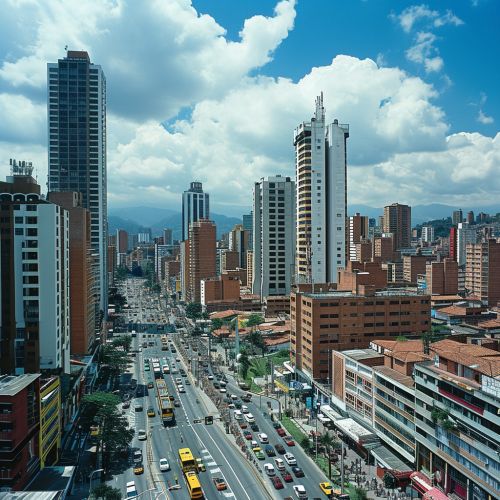Economy of Colombia
Overview
The economy is classified as an upper middle income economy by the World Bank and is the fourth largest in Latin America. It has experienced a historic economic boom over the last decade. Colombia is rich in natural resources, and its main exports include mineral fuels, oils, distillation products, fruit and other agricultural products, sugars and sugar confectionery, food products, plastics, precious stones, metals, forest products, chemical goods, pharmaceuticals, vehicles, electronic products, electrical equipment, perfumery and cosmetics.


Economic History
The economic history of Colombia goes back to its exploration by the Spanish, the country's colonial economic activities, and the various sectors that have contributed to its economic growth. The economy has traditionally been driven by exports of commodities such as coffee, oil, and other agricultural products.
Economic Sectors
Agriculture
The agricultural sector in Colombia is highly diverse and includes the production of various crops, livestock, forestry, and fishing. The country is one of the world's top exporters of coffee, bananas, and flowers.
Industry
The industrial sector in Colombia has been growing steadily and is a significant contributor to the country's GDP. It includes manufacturing, mining, and quarrying. The manufacturing sector is diverse and includes industries such as food processing, textiles and clothing, chemicals, metal products, and machinery.
Services
The services sector is the largest sector in the Colombian economy, contributing over half of the country's GDP. It includes financial services, retail, tourism, and government services.
Trade
Colombia's trade policy has been characterized by a combination of both regional and global strategies. The country is a member of several trade organizations, including the WTO, the Andean Community, and the Pacific Alliance.
Economic Policies
The Colombian government has implemented a range of economic policies aimed at maintaining economic stability, promoting growth, and reducing poverty. These include fiscal policies, monetary policies, and structural reforms.
Challenges
Despite its economic progress, Colombia still faces several challenges, including income inequality, inadequate public services, and the need for further economic diversification.
